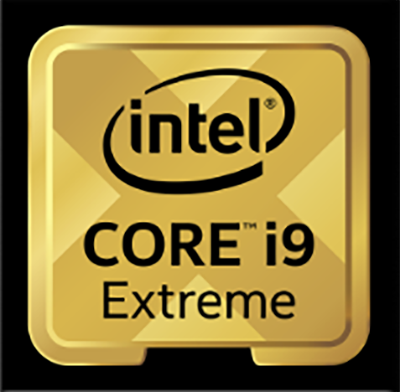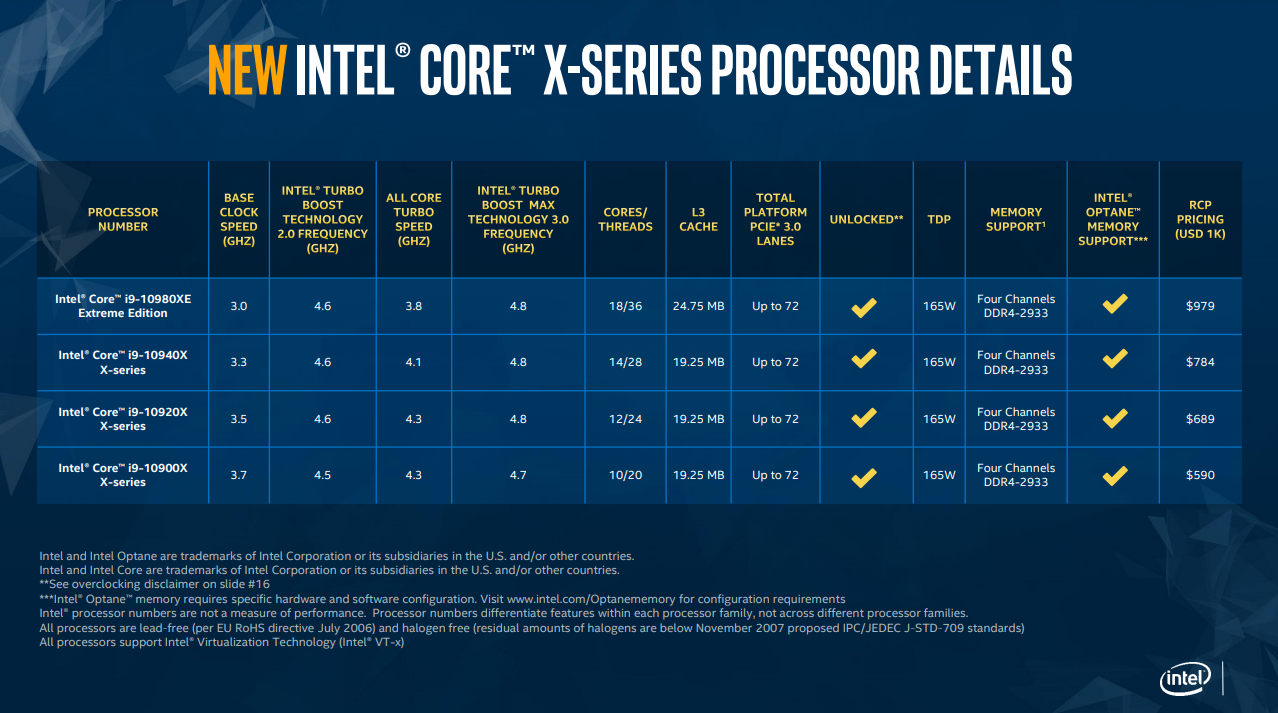The Cascade Lake-X Family

It is important to note here that Intel isn’t shaking up its HEDT line with anything ground-breaking. The products we are talking about today are what Intel calls an “optimization” of its previous microarchitecture. Intel found it’s old tick-tock strategy unsustainable and adopted a newer Process > Architecture > Optimization model. This strategy is essentially three stages, not the two we saw for so many years in the tick-tock strategy.
Process: This is the die shrink or process node change for its product cycles. Essentially, Intel manufacturers an older architecture on a new process node introducing a handful of improvements on the way. This usually improves clock speeds and reduces power consumption, but, feature-wise not much changes.
Architecture: Once the process has proven successful, Intel will introduce a new architecture manufactured on this new process node. The newer microarchitecture is developed for this process and introduces all Intel’s major feature updates and so on.
Optimization: This phase of the strategy involves taking its most recent architecture and updating it. It adds slight improvements into the design which don’t require drastic redesigns or development time. Processes are refined and typically denoted with a “+”.
As I’ve already said, CPU development cycles last years. As a result, Intel is making changes as quickly as it can to reposition itself so that it is more competitive. Following on its existing strategy, the Cascade Lake-X CPU’s fall on the optimization stage of the product cycle. These are essentially the same as the outgoing Skylake-X CPU’s with a few improvements here and there. Some of these are improvements that will largely go unnoticed while others do have an impact on the end-users experience. To be honest, outside of the CPU clocks, the difference isn’t Earth-shattering.
Lineup and Pricing
Intel’s new HEDT lineup consists of four processors. This includes the 10980XE, 10940X, 10920X and the 10900X. For the purpose of this review, we will primarily be referencing the 10980XE itself but most of what’s said here will apply to the entire CPU family.
For example, all these CPU’s support Hyperthreading. All these CPU’s have the same amount of L3 cache aside from the aforementioned 10980XE. The 10980XE has 24.75MB of L3 vs. 19.25MB on the other CPU’s. Clock speeds are generally all the same outside of the Turbo Boost Max 3.0 technology clocks which we’ll talk about later. For the most part, the biggest difference between these CPUs comes down to core counts. The handy chart above shows the differences in these CPUs.
Pricing
There are some interesting things to note about the pricing. There is a bit of a role reversal as Intel has become the defacto budget option for the HEDT market. Everything is priced lower than AMD’s 3rd generation Threadripper CPU’s. While these CPU’s are largely going to be unable to compete against the 3900X and 3950X CPU’s from AMD, it does allow one to step up to Intel’s HEDT platform, which does offer more lanes than X570 does.
Intel is no longer offering gimped PCIe controllers on any HEDT part that is less than $1,000. The baby of the Core X-Series, the 10900X comes in just a bit higher than the 9900KS does. You get two more cores and a more robust platform for the small cost increase. Obviously, the platform is more expensive but that’s going to be the case no matter what you do in the HEDT space.
There are many people that have been upset over no 16c/32t parts in the 3rd generation Threadripper family, as those CPU’s would obviously be much less expensive and allow users to get into the HEDT platform for less money. Not every workload benefits from massive core counts, so it’s a niche market, but one that AMD isn’t doing anything with. It’s 2nd generation Threadrippers will be available for some time to fill this gap, but that backs you into a dated platform on the AMD side as the 3rd generation parts require a new motherboard.

